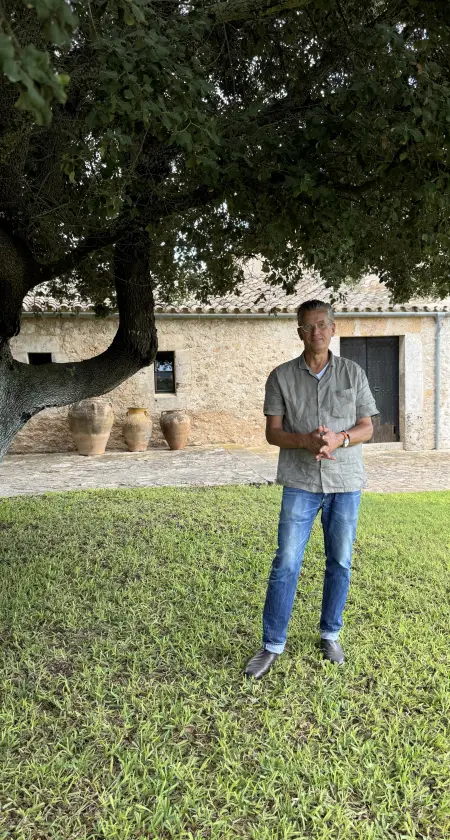
One of my favorite trees is the holm oak – Quercus ilex. It impresses me anew every time. Wherever I live, I plant one. Robust, slow-growing, gnarled, with silvery bark and picturesque, evergreen foliage.
The holm oak used to be considered a classic indicator plant: "If it grows here, the climate is Mediterranean." It's not that simple anymore. In Great Britain – where it's called Holm Oak – it has long been forming stands, especially in the south. The Romans introduced it there. In Germany too (in the wine-growing regions), you see it more and more often – made possible by climate warming. In colder regions of the country – for example in Berlin – it would probably still die off, so caution is advised.
In Spain, the holm oak once grew everywhere. Folk wisdom tells us: Between Cádiz and Salamanca, squirrels could have jumped from tree to tree without ever touching the ground – that's how densely the holm oaks once stood.
Then came Philip II with his Armada. Hundreds of thousands of these oaks are said to have been felled for the construction of the Spanish fleet – an immense intervention in the ecosystem. The Armada failed in 1588 off England's coasts, defeated by wind, waves – and a clever strategy under Elizabeth I.
The consequence: The land became drier, more open, poorer in trees. Today, large parts of Spain – apart from Galicia – are an open agricultural steppe. When you fly from Spain to Italy, you can clearly see the difference: a contrast like day and night. The Spanish steppe and Italy's comparatively much healthier tree population.
That holm oaks – and with them stone lindens – shaped the landscape for centuries is a fact. Today olive groves stand there. And holm oaks only sporadically.
The wood of the holm oak is dense, hard, slow-grown – and correspondingly high-quality. Not long-fibered like Central European oaks, but firm and fine. A material with substance. The British revere it.
And then there are the acorns: rich in starch and fat. Just right for the Iberian pigs that roam freely in the dehesas and feed exclusively on them. Anyone who has tasted genuine Jamón Ibérico de Bellota knows the aroma – it comes from the fruits of the holm oak.
Quercus ilex needs extremely little water, is evergreen, tolerates heat and drought – and adapts slowly but reliably. You could say: an oak with Mediterranean composure.
We like to use it in projects where robustness and permanence are required. Not as a quick fix, but as a long-term investment. A tree that should cope better with the coming decades than many others.
Robust. Long-lived. Climate-proof.